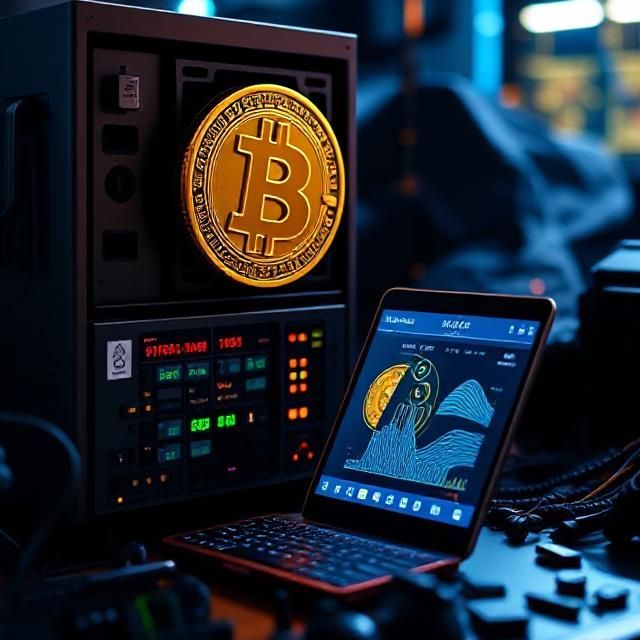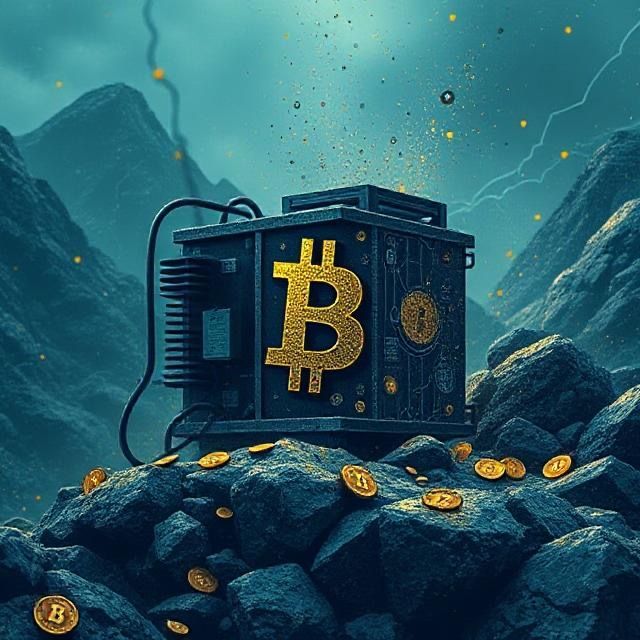Beginner’s Guide to Blockchain
Marius Bogdan Dinu • December 17, 2018
Blockchain is a familiar term and anyone who has been following the financial news must have heard about it. It is quite surprising that not many people know what the technology entails. If you are one such person, this complete beginners’ guide will answer any questions you may have about digital technology.
Blockchain technology is the brainchild of an anonymous individual or a group of people under the pseudonym Satoshi Nakamoto. This ingenious invention has come a long way since the release of Bitcoin’s white paper in 2008 by the said individual(s) and is taking the IT industry by storm.
However, regular folk just could not understand what all the fascination was all about. A good number is quite skeptical because they are unsure and ignorant of this groundbreaking technology.
Let’s break down this technology and help you figure out what it’s all about.
What is Blockchain?
Blockchain technology, in the simplest terms, is defined as a chain of encrypted blocks that contain information. Each block has a unique identifier (hash) and is managed by a cluster of computers. Blockchain is not owned by a single entity, as opposed to the current web 2.0 system that is owned by only a handful of companies.
Blockchain consists of three major concepts: blocks, nodes, and miners.
Blocks
This is where the data is stored in the chain. The information in these blocks depends on the type of blockchain. They contain a random whole number called nonce that is generated at the creation of the block.
The nonce then generates the blocks identifying header called a hash. A hash is as unique to the blockchain as a fingerprint is to humans. So, once a block is created, the hash is tied to whatever information it holds, and any change of information in the block will also change the hash.
It’s easy to identify if the information in a block has been tampered with. All you have to do is check if the hash has changed. Blocks ensure that the network stays secure. Any change is immediately noticed and tracked affecting its verification.
Network Nodes
These are connection points that can recent, create, store and send data across a network. They are the dots that connect the system. They are accessible on devices in which you can install blockchain software and be able to access the technology and its services, for example, Bitcoin, e-wallet and other blockchain services.
There are two types of nodes, full nodes, and partial nodes. Full nodes verify incoming blocks and proceed to store the blockchain and all the data on it. Subsequently, full nodes need vast storage space for them to store the blockchain.
On the other hand, partial nodes, also known as light nodes, can only verify incoming blocks but lack the adequate storage for the blockchain. Keep in mind that some full nodes can also be a miner.
Now through blockchain, users can perform certain activities including making transactions, receiving and transmitting transactions, tracking and also verifying transactions. And now, miners enable more functions to be completed.
Miners are network users who perform an activity known as “Proof of Work“. The first network user to do the Proof of Work for a blockchain can generate rewards in the form of bitcoins.
Proof of Work
Mining is preempted on the assumption that nobody else is trustworthy on the network. In the worst-case scenario, even if 50% of those network users who determine the consensus that verifies a blockchain are compromised, the system still strives to ensure it is secure.
Miners, therefore, ensure further security, meaning blockchain technology is entirely pursuing a full proof security system for its network. What happens is network users, known as miners, compete to solve various complex computational cryptographic riddles where they seek solutions that will be verified and added to the blockchain.
The first miner to successfully do so stands to be verified or corrected by the other competing miners until the block is confirmed. If the miner’s solution is validated to be accurate, they get rewarded in the form of coins that they can cash.
Mining is expensive due to the extensive electricity consumption and high hardware cost, thus a costly security measure.
Other Ways Blockchain Secures Networks
Blockchain technology equally depends on so much more to secure its network. It does so through hashing, proof of work and peer to peer network. This part gets a bit technical, but we’ll wrap it up well to help you understand blockchain.
Hashing is the unique fingerprint of the blocks that distinctly identifies it and the information it contains. Aside from this, there is the proof of work and peer to peer networks that decentralize the network from a single entity.
Nodes, as previously mentioned, allow for tracking any transaction within each block and thus verifying all is in order within the blockchain. The nodes also keep a copy of the blockchain.
Peer to Peer Network
Imagine how much more secure this network is. When one joins a blockchain (which has open access for anyone to join), they become nodes and have a full copy of the blockchain. Every peer on the network gets notified if any block within the blockchain is tampered with enabling them to track and verify that the transactions are legitimate.
In case of any change, for example, when a new block is added to the chain, all nodes with access to the blockchain get notified. After verifying details, (though the system’s hashing has already secured the network) everyone on the blockchain, through a consensual process proves the transaction valid.
To compromise the security of this network, over 50% of the network users of a blockchain would have to be overridden or tampered with.
The Blockchain is So Much More: There’s so much more to blockchain technology. However, armed with the information in this article, you should be better placed to discuss blockchain and how the technology works.
The post Beginner’s Guide to Blockchain appeared first on Crypto Adventure.
The post Beginner’s Guide to Blockchain appeared first on Crypto Adventure.
Disclaimer: This is not trading or investment advice. The above article is for entertainment and education purposes only. None of the content on Crypto Folds is investment advice nor is it a replacement for advice from a certified financial planner. Please do your own research before purchasing or investing into any cryptocurrency.

Bitcoin has grown from a fringe technological curiosity into a major financial asset, and at the heart of its ecosystem lies one of its most powerful mechanisms: mining. But while mining was once the domain of tech-savvy enthusiasts with custom-built rigs, it has now become increasingly accessible to anyone with a smartphone. For those wondering how to mine Bitcoin or is mining bitcoin profitable in today’s world, the answer might just lie in the palm of their hands. How Bitcoin Mining Works Bitcoin mining is the process by which new bitcoins are entered into circulation and transactions are verified and added to the blockchain. Miners solve complex cryptographic puzzles to validate blocks of transactions. The first one to solve it gets rewarded with newly minted Bitcoins and transaction fees. This system ensures network security and maintains the decentralized nature of Bitcoin. In the past, mining required expensive hardware (like ASICs), constant energy consumption, and deep technical know-how. But recent innovations have given rise to mobile-friendly methods that offer alternative ways to participate in the mining ecosystem. Methods of Bitcoin Mining via Mobile Apps Cloud Mining: This method allows users to rent mining hardware hosted in remote data centers. Users lease a portion of mining power (hash rate) and earn a share of the mined Bitcoin. Many cloud mining platforms offer apps to monitor earnings. However, some cloud mining services have been criticized for a lack of transparency and reliability. Mobile Mining: These apps claim to mine Bitcoin directly from your phone by using its CPU or GPU. However, due to limited processing power, energy inefficiency, and wear on devices, mobile mining is generally inefficient and mostly unprofitable. Many apps in this category are more simulations than real mining tools. Digital Mining: A more advanced alternative, digital mining involves owning hash power tied to real-world mining hardware, without ever having to manage physical equipment. Through platforms like GoMining, users buy digital miners via mobile apps and earn daily Bitcoin rewards based on their virtual miner's hash power. This approach bridges real mining infrastructure with digital convenience. How to Choose a Bitcoin Mining App Selecting the best Bitcoin mining app requires careful research. Here are some key things to consider: Transparency: Make sure the bitcoin mining app provides clear information about how it works, what kind of rewards you can expect, and how mining is executed. Legitimacy: Check for user reviews, community feedback, and platform transparency. If an app promises sky-high returns with no effort, it might be a scam. Ease of Use: A good crypto mining app should be user-friendly, with intuitive navigation and helpful features such as dashboards, tutorials, and support. It’s a plus, if the app is easy for newcomers. Performance Tools: Features like a built-in crypto mining calculator help users estimate potential rewards based on input variables like hash power and token holdings. Cross-Platform Compatibility: Look for apps that work across multiple devices, including a Bitcoin mining app for Android and other mobile platforms. Ecosystem Support: Some apps go beyond mining, offering gamified tasks, referral bonuses, or access to early crypto project launches. What to Avoid Unrealistic Promises: If it sounds too good to be true, it probably is. Avoid apps guaranteeing huge returns in short periods. Poor Reviews or Lack of Information: A quick search should reveal whether the app is legitimate or has issues. Fake Mining Games: Many apps posing as " mining games " only simulate mining activity without any real payouts. Lack of Contact Info or Support: A legit app should have accessible customer service and a traceable company behind it. GoMining: A Hybrid Platform with Real Mining Power One of the most talked-about platforms in the digital mining space is GoMining. Designed to simplify access to real Bitcoin mining, GoMining lets users buy digital miners linked to physical mining hardware in professional data centers. Unlike typical cloud services, GoMining provides full transparency and offers real-time mining rewards, tracked directly in the app. It's not just a bitcoin mining app, it's a fully-fledged crypto mining ecosystem that includes: A user-friendly interface is available as an app for both Android and iOS, and as a desktop version. Tools like a calculator and the dashboard are used to estimate your earnings. Additionally, there are options to upgrade your miners and interact with your farm within the app. The GOMINING token is the native token of the ecosystem. It fulfills several purposes, among which is the option to pay for maintenance with a discount of up to 20%. The GOMINING token can also be used to gain access to voting and locked presales of Bitcoin projects on the launchpad. Giveaways, airdrops, and other perks help to enhance earning potential. Two mining modes include Solo mining and Miner Wars, a clan-based game. Whether you're a beginner or an experienced user, GoMining simplifies the process while maintaining real earning opportunities. It's widely discussed in positive GoMining app reviews and seen as one of the best Bitcoin mining app options available. Final Thoughts So, is Bitcoin mining profitable in 2025? The answer depends on your approach. Traditional methods may no longer be accessible to everyday users, but new technologies and platforms like GoMining offer modern, user-friendly alternatives. With the right research and a smart strategy, mining Bitcoin via apps can still be profitable, especially when using platforms designed for transparency, scalability, and long-term growth. If you're exploring Bitcoin mining apps , look for legitimacy, user trust, and real-world connections to mining infrastructure. Digital mining through trusted platforms offers a fresh way to participate in the Bitcoin economy, one that doesn’t require cables, coding, or constant maintenance. As the industry evolves, the tools we use must evolve too. Choosing the right app could make all the difference between a missed opportunity and a new stream of crypto income. The main thing to remember is that every user should do thorough research before committing to one app. There’s a reason DYOR (do your own research) is the motto of the most successful crypto traders and experts.

Time to Troll Your Way to Riches Crypto enthusiasts, prepare yourselves: Troller Cat is about to hit the scene with a presale launch on May 2nd, 2025 . Tapping into the electrifying meme coin space, this cat-themed token is quickly becoming the center of buzz across crypto communities—and early signs suggest it could be the next breakout star. If history is any guide, the biggest wins in crypto often come before a project captures mainstream attention. With Troller Cat’s presale imminent, the opportunity to get in early on what could be a viral sensation is rapidly closing. Introducing Troller Cat ($TCAT): A New Meme Legend in the Making Everything about Troller Cat—from its branding to its strategic rollout—signals viral potential. During its recent whitelist phase, social media exploded with anticipation, setting the stage for what’s shaping up to be one of the hottest presales of 2025. Early adopters are seeing strong fundamentals behind the meme: beyond its playful theme, Troller Cat brings serious tokenomics to the table. Featuring a deflationary model and a rewards system based on community staking, the project’s foundation is designed not just for hype—but for longevity. Timing is Everything Like the meme coins that came before it, Troller Cat is building viral momentum at an unstoppable pace. Its growing community, clever marketing, and thoughtfully crafted roadmap all hint at major upside potential. On-chain data and early Discord leaks point toward a sustainable token model, where mechanisms like token burns and staking rewards fuel ongoing community engagement and price support. For investors looking to ride the next major wave, this could be a defining moment . What Sets Troller Cat Apart? While Troller Cat fully embraces its meme roots, the project is serious about real-world execution. Built on a clean, scalable blockchain—expected to be Ethereum (ERC20)—the token is engineered for speed, low gas fees, and wallet-friendly integration, all essential factors for achieving mainstream adoption. The project’s official website, Trollercat.com , is already a buzzing hub for crypto enthusiasts and cat lovers alike. With plans for a play-to-earn Game Center, robust staking mechanisms, and future centralized exchange listings, the roadmap mixes humor with hard business acumen. From their viral whitelist campaign to carefully planned strategic partnerships, the Troller Cat team knows how to balance chaos with coordination—keeping the spirit of meme culture alive while building long-term value. The Final Countdown While crypto presales naturally carry risk, they also offer the rare opportunity to invest before mass adoption. With Troller Cat’s presale starting May 2nd , early participants could be positioning themselves ahead of what many predict will be one of 2025’s most electric meme coin launches. And for those thinking of waiting for public exchange listings? Remember: early adopters often set the price for everyone else. Glossary of Terms: Troller Cat – A meme-inspired crypto project launching its presale on May 2nd, 2025. Presale – An early-access investment phase before a token’s public launch. Whitelist – A pre-approved list of users granted early entry into a presale. Deflationary Token – A token that reduces its supply over time, often increasing scarcity. Play-to-Earn (P2E) – A gaming model where players earn crypto rewards for participating. Tokenomics – The economics and structure governing a token’s supply and incentives. Staking – Locking tokens for rewards, enhancing network security and project growth. Frequently Asked Questions: When is the Troller Cat presale launching? The presale officially starts on May 2nd, 2025. How can I join the Troller Cat whitelist? Visit trollercat.com and follow the simple instructions to secure your spot. Is the Troller Cat token deflationary? Yes, Troller Cat will feature token burns and other supply-reducing mechanics. What blockchain will Troller Cat use? While early reports pointed toward BNB Chain, updated confirmations indicate Troller Cat will launch on Ethereum (ERC20). What makes Troller Cat unique? Troller Cat combines viral meme culture with real utility, including staking rewards and future Game Center integrations. Can Troller Cat tokens be staked? Yes, staking features are expected shortly after the presale concludes. Is Troller Cat a safe investment? As with all crypto investments, there are risks. Always conduct your own research (DYOR) and review smart contract audits and KYC when available. About Troller Cat Troller Cat is a meme-inspired cryptocurrency project designed to blend viral internet culture with real-world blockchain utility. Launching its presale on May 2nd, 2025 , Troller Cat aims to build one of the most dynamic and entertaining communities in crypto. Powered by a deflationary token model, staking rewards, and future play-to-earn (P2E) integrations, Troller Cat delivers both humor and substance. Built on the Ethereum (ERC20) network for speed, scalability, and low fees, the project’s mission is to bring meme lovers and serious investors together in one electrifying ecosystem. Learn more at Trollercat.com .

The transformation that Bitcoin went through, from a niche digital currency to a globally recognized asset, has revolutionized how we think about money, investment, and technology. By advancing decentralized finance, Bitcoin directly challenged the existing financial institutions. With the surge in interest came a growing need for innovative approaches to access this ecosystem. That’s why Bitcoin mining , once an obscure activity reserved for early tech adopters, has quickly grown into a sophisticated, multi-tiered industry. Today, it’s even more than that. Cryptocurrencies live by their own laws and regulations; there are trends to follow, and elements to understand before getting involved. Yet, despite Bitcoin’s evolution, it continues to face challenges that require new, user-friendly solutions. The Traditional Path: From CPUs to ASICs In the early days of Bitcoin, enthusiasts mined using their personal computers’ central processing units (CPUs). The power was more than enough, and the lack of interest in a new, untested technology didn’t allow for Bitcoin to make waves. Still, as competition grew, users upgraded to more powerful graphics processing units (GPUs), which offered better efficiency. The popularity of Bitcoin also surged, and that’s when Bitcoin mining slowly stopped being just a hobby. Eventually, application-specific integrated circuits (ASICs) became the standard for serious miners, offering unparalleled speed and energy efficiency. But ASICs are expensive, consume large amounts of electricity, and demand constant maintenance. Large facilities led by companies spearheaded the change and Bitcoin mass adoption . This evolution effectively shut out the average user from participating in mining. Today, running an independent mining operation requires significant capital, technical knowledge, and physical space. There are seemingly too many barriers that deter mainstream adoption. Mining as a Service: Cloud and Mobile Solutions To bridge this gap, cloud mining platforms were created. These services allow users to rent hash power from remote data centers without dealing with hardware directly. While more accessible, cloud mining platforms often lack transparency, and many have been accused of being Ponzi schemes. Some users never see a return on their investment, and that’s just part of the issue. Companies often offer a locked contract that doesn’t allow a user any control over their mining operation. Meanwhile, mobile mining apps claim to offer Bitcoin mining on phones, using device CPUs or offering simulation-based experiences. These apps are typically inefficient, power-draining, and often function more as marketing tools than real mining mechanisms. Nonetheless, they illustrate the public demand for convenient and passive income apps tied to Bitcoin. Digital Bitcoin Mining: The Most Modern Approach Digital mining is an evolution of both cloud and mobile mining. It enables users to own digital miners. A digital miner is a virtual asset that represents actual hash power in professional mining facilities. Unlike cloud mining contracts, digital miners are ownable. As such, they can be upgraded, sold, or transferred, offering more control and transparency. Digital mining removes the need for hardware ownership, offering users real mining rewards without the hassle of dealing with the issues related to traditional mining. It represents a step forward in making legit Bitcoin mining accessible to anyone, anywhere. GoMining: A Digital Mining Ecosystem A leader in this new wave is GoMining, a crypto mining website that offers a fully digital experience. Through its app and web platform, users can purchase and manage digital miners that are directly linked to physical mining operations. GoMining combines ease-of-use with real mining infrastructure. It's a Bitcoin mining website designed for both beginners and seasoned crypto users. The core of its ecosystem may be built around accessible Bitcoin mining, but there’s so much more to the platform. What sets GoMining apart is its holistic approach: Two Mining Modes: Aside from solo mining, which allows users to acquire daily BTC rewards according to the power of their farm, there is another mode. Miner Wars is a clan-based mining game, in which players join clans and compete against each other for rewards. Launchpad: A Bitcoin-centric launchpad allows Bitcoin projects to present their tokes for pre-sale. GOMINING Token: Used to pay maintenance fees at a discount, access token presales, and participate in the ecosystem through voting. The tokens can also be invested in a liquidity pool . Secure Wallet: Integrated features that allow users to hold and store their Bitcoin rewards and GOMINING tokens. Passive Income Potential: Rewards are distributed daily, and users can optimize earnings through strategic upgrades and in-game participation. LBH (Level-Based Hashrate): A tiered system that rewards long-term engagement and miner power accumulation. The GoMining platform is available as a Bitcoin miner app , suitable for mobile devices and providing Bitcoin mining on phone without draining local resources. This makes it a strong contender among crypto mining sites aiming for mass adoption of Bitcoin. Why Digital Mining Matters Digital mining lowers the barriers to entry in the Bitcoin mining world. It provides an accessible gateway into an otherwise complex industry. For those asking whether mining is still profitable, the answer is nuanced. It can bring considerable rewards, but only when done through efficient, transparent, and legitimate platforms. GoMining’s transparency, use-case versatility, and gamified features make it one of the most promising players in the space. It transforms passive income apps into real revenue channels tied to blockchain infrastructure. As Bitcoin continues its journey toward global acceptance, platforms like GoMining will play a crucial role in democratizing access to mining. They are not merely tools, they’re part of the broader movement toward decentralized financial empowerment. Final Thoughts The landscape of Bitcoin mining is shifting. From hardware-heavy operations to app-based solutions, the evolution has opened doors for millions of new participants. Digital mining, exemplified by GoMining, is the most advanced iteration yet. It offers the security of real hash power with the ease of mobile access. In navigating the challenges of Bitcoin mining, GoMining and similar passive income apps offer clarity, control, and opportunity. They bring us one step closer to true Bitcoin mass adoption, where earning BTC is not limited to those with tech labs and industrial budgets, but is available to anyone with a phone and a plan.

One doesn’t have to be a Bitcoin Maximalist to realize that Bitcoin is the cornerstone of all crypto. Whenever the environment is good for the world’s no.1 cryptocurrency, it’s favorable for all the rest of them. But like any trend with high potential, in time, Bitcoin has become somewhat inaccessible. After its price had soared, Bitcoin quickly captured the attention of large companies, turning mining from an enthusiast-exclusive hobby into a massive business with huge mining farms working day and night. Mining Bitcoin: The Hidden Barriers to Entry What is mining Bitcoin really about? Without getting into the technicalities of it, mining is a process of minting new Bitcoin and rewarding it to users for solving complex math problems, using their hash power. Said hash power usually comes from either a powerful GPU or an even more powerful ASIC miner device. Those can be expensive, which is why average users don’t always view mining as a potential source of passive income . The initial investment, summed up with monthly payments for electricity and maintenance, makes it a high-risk operation without a guaranteed return. It doesn’t help that after each halving, rewards for the same amount of work are cut in half. While this is what keeps Bitcoin supply balanced, it renders a lot of mining equipment obsolete after only 4 years of service. In that sense, traditional mining requires more than just knowledge of the equipment and even more than being prepared to offer a hefty initial investment. It requires strategy and understanding of the trends as well as the ins and outs of the market. As a result, many users, even potentially interested in mining, had to resort to watching Bitcoin succeed from the sidelines, never having a chance to participate in its growth. There should be ways to remedy that. Mining Going Digital Digital mining is a relatively new approach based on something called Liquid Bitcoin Hashrate . Essentially, we are dealing with digital miners – virtual devices connected to real physical data centers. These devices can be upgraded, sold, and bought. The first collection of digital miners – The Greedy Machines – was released by GoMining in 2022. Digital Mining vs. Cloud Mining: What’s the Difference? While both digital mining and cloud mining aim to make Bitcoin mining more accessible, they differ significantly in structure, ownership, and long-term value. Understanding the differences between them can help users make smarter decisions when choosing how to mine. Cloud mining is a service-based model. Users rent a portion of mining power (hashrate) from a provider who owns and operates the physical equipment. In exchange, the user receives a share of the mining rewards. However, cloud mining contracts are often time-limited, opaque, and rigid. Users typically have no control over the equipment, can’t upgrade it, and are locked into contracts that may not be profitable if Bitcoin prices drop or network difficulty increases. Digital mining, introduces a more transparent and ownership-based alternative. Instead of renting power, users own a digital miner. This gives the user autonomy over their asset. Rewards are issued daily or weekly, based on the mining mode, and users can track their performance in real time via an app. One of the key differences lies in flexibility and strategy. With GoMining’s digital miners, users can reduce costs using GOMINING tokens, apply promo codes, or enhance earnings through perks like GoMiner avatars. This isn’t possible in traditional cloud mining setups, which tend to offer a fixed, “set-it-and-forget-it” approach. Ultimately, digital mining offers greater transparency, control, and earning potential. When it comes to passive income ideas , an ecosystem that empowers users to make strategic decisions and benefit from long-term participation in the mining economy is the best way to go. Understanding the GoMining Ecosystem The GoMining ecosystem is a powerful reimagining of how Bitcoin mining can work in today’s fast-paced, digital-first world. By removing the traditional barriers of entry, like expensive hardware, high electricity costs, and technical know-how, GoMining has made mining accessible to virtually anyone. Whether you’re a seasoned crypto enthusiast or a newcomer looking to generate passive income, GoMining offers a streamlined and user-friendly alternative to conventional mining operations. But GoMining is more than just a mining solution. It's a comprehensive platform that introduces multiple layers of utility, strategy, and gamification. One of its standout features is Miner Wars , a play-to-earn game where users form clans and compete for BTC and GOMINING token rewards. It blends entertainment with earnings, making mining more engaging and social. Another cornerstone of the ecosystem is the GoMining Launchpad – a crypto launchpad that provides early access to promising Bitcoin projects. This allows GOMINING token holders to diversify their holdings and invest in new crypto ventures ahead of public listings. It's an intelligent way to extend earning potential beyond traditional mining. GoMining also helps users save and optimize earnings through several integrated features. For example, paying maintenance fees with GOMINING tokens gives users up to 20% in discounts. Everything within the ecosystem is designed to work together: users mine BTC, earn and spend GOMINING tokens, use the app to manage activity, and grow their influence through the VIP and referral systems. The GOMINING token price is tied to the platform’s success, making it an integral part of the long-term value proposition. Bitcoin Mining in 2025? Today, in 2025, many newcomers to the crypto world wonder how to earn Bitcoin and what is Bitcoin Mining . The good news is, it’s not just by trading anymore. The landscape of mining has, indeed, changed. But thanks to accessible platforms, like GoMining, mining Bitcoin is once again possible without large investments or extensive tech knowledge. There is a way to make decentralized finance appeal to more people, and digital mining is certainly one of those ways.
NEVER MISS AN ARTICLE!
Sign up and stay up-to-date about what's happening at our site.
